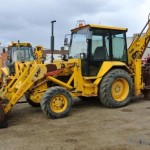Contents
Maintaining your sand system is very important, because it is a process that involves reduction of variations and fluctuations. It requires not only a balance of the incoming and outgoing materials, but also maintaining a sand system requires a balance of the energy used. In other words, the addition of new clay layers must be made of offset losses to dust collection, thermal destruction, etc. The energy that activates the clay in the sand muller must be well-maintained, while the heat energy induced into the sand during the process of solidification must be removed in order to remain constant and balanced. However, the sand muller is an essential piece of equipment, and some sand mullers are designed to last for many years. Sand mullers mix sand without contaminating it during the mixing process.
Hot sand is the most common problem for the modern metal-casting facilities, due to the tendency of increasing the sand temperature after only few multiple passes. The return sand that enters the sand muller at temperatures over 50ºC is considered as hot molding sand. The hot molding sand can cause many different problems, such as uncontrollable sand drying, sand sticking in the hoppers and conveyors, difficulties when controlling the sand muller, metal penetration, loss of prepared sand properties, broken molds and many other problems. Today, there are two extremely efficient methods for maintaining a sand system, and they are known as the sand cooling and material losses.
Sand Cooling
The only method for cooling hot sand without changing the type of castings and sand-to-metal ratio is the sand cooling method. Installing a cooler in your sand system is the most practical solution for the hot sand problem. The sand coolers utilize vaporization for reducing the temperature of the sand. Changing the state of water, from liquid to steam, requires a great amount of thermal energy, and this process results in efficient sand cooling. But before buying a cooler, you need to consider few factors, such as the discharge moisture control, sand pre-blending, the ability of maintaining sand size, machine maintenance and adequate retention time. In order to select the right cooler for specific applications, the atmospheric conditions, the incoming sand and water temperatures and the geographic location must be known.
Material Losses
This is the most common method for maintaining sand systems. The green sand can be constantly recycled with addition of some raw materials, which is a big advantage. To perform this maintenance method there are few important factors that need to be closely considered. The first one is the amount of water that needs to be removed in a form of steam. If the temperature of the sand is above 100ºC, the free surface water will be removed. That amount of free water can be estimated accurately in a sand lab. Second, the carbon additive that returns to the sand muller is consisted of a combination of coke, coal and ash, but it depends on the temperature and mold atmosphere.

Additionally, the special additives in sand mullers, such as the cereal cellulose, are destroyed entirely at temperatures greater than 95ºC, therefore should be replaced.






Comments are closed.